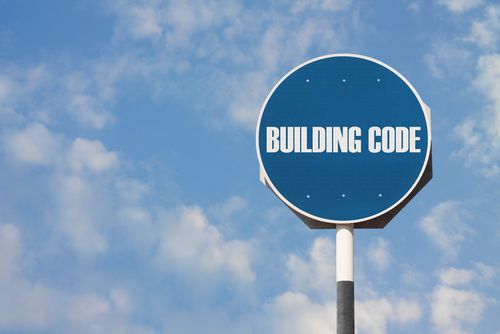
When you are constructing a home on the coast, there are building codes that are unique to coastal living. Getting familiar with the following “must know” codes will help you immensely during your pre-construction planning phase. In fact, several of these are helpful before you buy your lot. Remember, too, that it’s always a good idea to call your local building department if you have any questions or reservations about how to proceed. If you’re unlucky (or unwise) enough to proceed with your project using improper code, you’ll find that asking for forgiveness, instead of permission, doesn’t work.
Four Coastal Codes You Need to Know
1) Know your BFE (Base Flood Elevation)
Within designated flood zones (called VE, AE, AH, AO and X Zones) your municipality will assign Base Flood Elevation (BFE) requirements. The Base Flood Elevation indicates how high a structure must be elevated above Mean Sea Level (MSL).
Here’s how it works. Let’s say your property falls in a V-16 flood zone. For V Zones the first horizontal member under the structure must meet 16 feet MSL. Now, let’s look at property with a Base Flood Elevation of A-13. For A Zone properties the first finished floor must be elevated to meet or exceed 13 feet MSL. Further, all materials used below the Base Flood Elevation are required to be Class 4 or 5 flood-resistant materials.
It’s probably a good idea to know what a properties’ BFE is prior to buying it. Generally speaking, the higher the BFE number, the more your foundation will cost. The BFE will also influence the design decisions you make about the home plan you’d like to build.
2) Know Your Zones (Flood, A & V Zones
Many coastal properties fall into flood zones. For the most part, this isn’t necessarily bad news. After all, getting close to a body of water is a large part of the allure of coastal living. You, however, do need to know how this may affect the cost of your building project.
Generally speaking, building in a V Zone is the most expensive. V Zones are typically ocean front, or near to ocean front, properties. The building codes that apply to V Zone properties will add about 15-30% to the total cost of the construction project. Much of the added cost will arise from 1) the additional ties, straps, hold downs and anchors required by the building code 2) additional cost for windows with upgraded wind ratings and 3) added cost for elevating the structure.
A Zoned properties carry some of the same code requirements, but will generally only add about 10-15% to the cost of construction.
3) Ignoring Setbacks May Cause Setbacks
Setbacks are the set of dimensions that define where you’ll be allowed to build on your lot. They can be vitally important for coastal developments, where lots tend to be partitioned into smaller than normal parcels. Typically, setback dimensions are provided for front and rear yards and side yards. Here’s an example from the Isle of Palms, SC Building Department:
SR-1 Single Family Residential: Lot size 17,500 or greater, setbacks are 30 feet front and rear yard, 10 feet side yards. If lot is less than 17,500 sq,. ft., setbacks are reduced to 24 feet front and rear yard, 10 feet side yards.
In additional to setback rules, your lot may have utility right-of-ways as well as maximum lot coverage rules that apply. In a worst case scenario, these rules could combine to make your lot impossible, or at least challenging, to build on. So, do diligence and understand what the plat is telling you before proceeding.
4) Don’t Bump into Your Height Restriction
Many coastal communities are amending their building codes to shrink the total height allowed for residential structures. The idea is to avoid the creation of “corridors of darkness” caused by an excessive number of tall structures on a residential street. This can be tricky, especially because of the need for elevated foundations. The height restrictions can range from 28’ to 50’. As you can image, this will have a huge impact on the design that you choose for your property. In some instances, plans can be modified to squeeze under a given height restriction – just be sure to do the math before you purchase your plan.